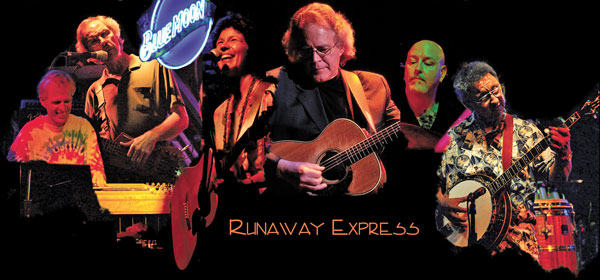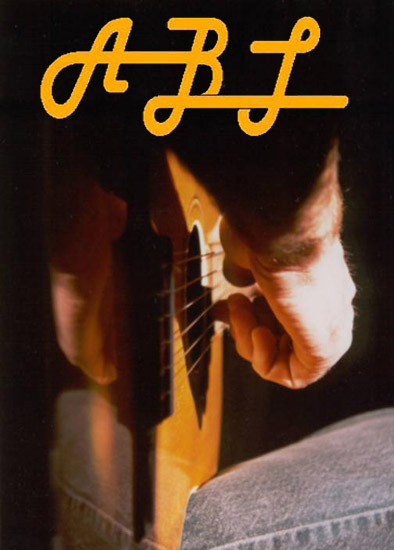|
Column Archive |
||
April, 2013 |
"Composing Tools For Your Songwriting Toolbox Part 2: Chords" |
by Webmaster |
|
"Measure For Measure" by David Alzofon's columns in American Songwriter inspired this column. It includes 'Easy' is Just a Four-Letter Word in the March / April 2012 issue, The Truth About Those Three Chords in the May / June 2012 issue, Unchained Melody in the July / August 2012 issue, Sex, Drugs and Dopamine in the September / October 2012 issue and The Sound of Music in the January / February 2013 issue. Most songwriting books, classes, workshops, etc. concentrate on lyrics. Alzofon's series of articles is the best description of how to write music that I have found. All quotations that are not specifically attributed to someone else come from David Alzofon's columns. Indented portions are paraphrases of Alzofon's words.
In addition to the material in Alzofon's articles, I have included some basic music theory and other tips I've learned from various music and songwriting books, workshops, teachers, and my good friend B. J. Suter.
I appreciated the advice Alzofon learned from his boss:
He suggests we divide difficult tasks, like writing a song, into small, easy ones.
I wrote a series of three columns using these tasks. Last month's column concentrates on rhythic phrasing. This month's column concentrates on chords. Next month's column concentrates on melody.
Music is written in keys. That key is a scale, usually seven ascending notes of specific intervals. The eighth note is the same as the first note, but an octive higher in pitch. There are actually twelve notes in an octave. In a C major scale, the other five notes are sharps and/or flats (the black keys on a piano). The natural notes in the scale don't include the various sharps / flats. The C major scale is the simplest, most commonly used scale that has no accidentals in its "natural" state. In the key of C, the natural notes are 1. C (do), 2. D (re), 3. E (mi), 4. F (fa) , 5. G (so), 6. A (la), 7. B (ti). "Accidentals" (sharps / flats) are added to the C major scale for tunes that have a jazz, swing, or blues feel.
There are intervals between notes in a scale that vary. A the interval between C and C# is a half-step. The interval between 1. C and 2.d D is a whole-step (two half steps). The interval between 2. D and 3. E is a whole-step. The interval between 3. E and 4. F is a half-step (no black key on the piano), between 4. F and 5. G a whole-step, between 5. G and 6. A a whole step, between 6. A and 7. B a whole-step, and between 7. B and 8. C a half-step. If you start on any note and use this pattern of intervals, you will have a basic major scale. (We won't cover modes or minor scales here.)
A basic chord in a key is built using any natural note of the scale as the root of the chord. A triad (three notes) is created using the root note, and the third and fifth natual notes of scale couting up from the root note. So a chord built with a root note of C, in the C major scale, would have C, E, and G in it. A chord built with a root note of E, in the C major scale, would have E, G, and B. Because of the specific intervals, a chord will have a major (happy) feel or a minor (sad) feel. The usual interval between the first note and the second note in the chord is four notes, including sharps / flats. In the key of C, the actual notes, starting from C are: 1. C# (aka Db), 2. D, 3. D# (aka Eb), 4. E. In the key of C, the interval between the E and G, the second and third notes in the chord, starting from E, is only three notes: 1. F, 2. F# (aka Gb), 3. G.
If you change the interval between the first and second note of the chord, it also changes the interval between the second and third note of the chord. Using only three notes to get from C to the next note in the chord gets E-flat, and requires four notes to get from E-flat to G. That changes the chord from major to minor.
The six basic chords for any major key start on any of the first six notes of the scale, three of which are major and three of which are minor. The chord that starts on the 6th note of the scale is called the relative minor. It has the most number of notes in it that are in the tonic chord and has the most comfortable sound—we're used to hearing it more often.
Chords change their sound when the voicing changes, that is when the lowest note in the chord is not the root note of the chord. This results in pitch changes to the chord, as well. The various positions for a single chord up the neck of an instrument, result in different sounds for the same chord. In addition, other notes, including the sharps and flats that aren't in the natural scale, can be added to a chord to create different sounds. Adding the sixth note to a major chord adds a minor feel. Adding a seventh note to a chord adds tension and gives it a bluesy feel.
You don't have to limit yourself to the chords listed there. Change what is usually a major chord to a minor, or a minor chord to a major and see if you like the result. Add a 2nd, 6th or 7th note to the chord and see what happens. Does it add or reduce tension? Does it give it a different flavor that is more suitable to the emotion of the song?
Consider your lyrics when you select your chords. Prosody means that the music matches the lyrics. So if your lyrics are happy, you might want to stay with the major chords in the scale: the tonic, the dominant seventh, and the fourth, the chord based on the fourth note of the scale. If your lyrics are sad, full of longing, dark, dramatic, you might want to use the minor chords. Listen to how each chord sounds in the scale, and with each of the other chords around it, to see if it fits the mood of your lyrical phrase. In addition, you might consider the form of your song when you select your chords. It is recommended that each verse has the same chord structure as every other verse, that the chorus start on a different chord and have a different chord progression than the verse, and that a bridge, if there is one, starts on a different chord, and has a different chord progression than either the verses or the chorus.
Not every song will use every "tool" that you learn from various songwriting books, classes, and articles. But it's great to have a full tool box and know what to use, when to use it, and why.
Next month's column concentrates on the melody. Thanks for visiting AcousticByLines.com! |
|||
| TOP | |||


